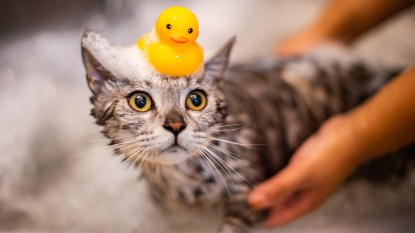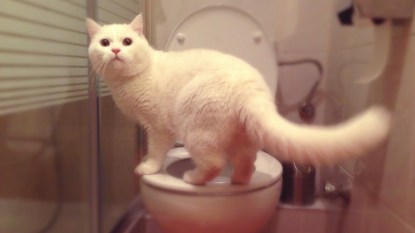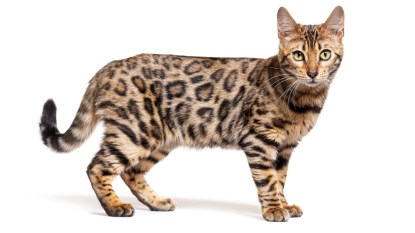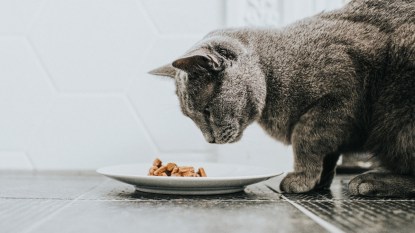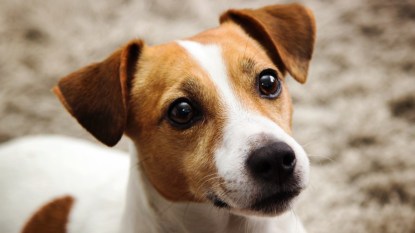Playing With Your Dog Isn’t Just Fun, It’s Also Important for Their Well-Being — Here’s Why
Dogs learn best when motivated and happy.
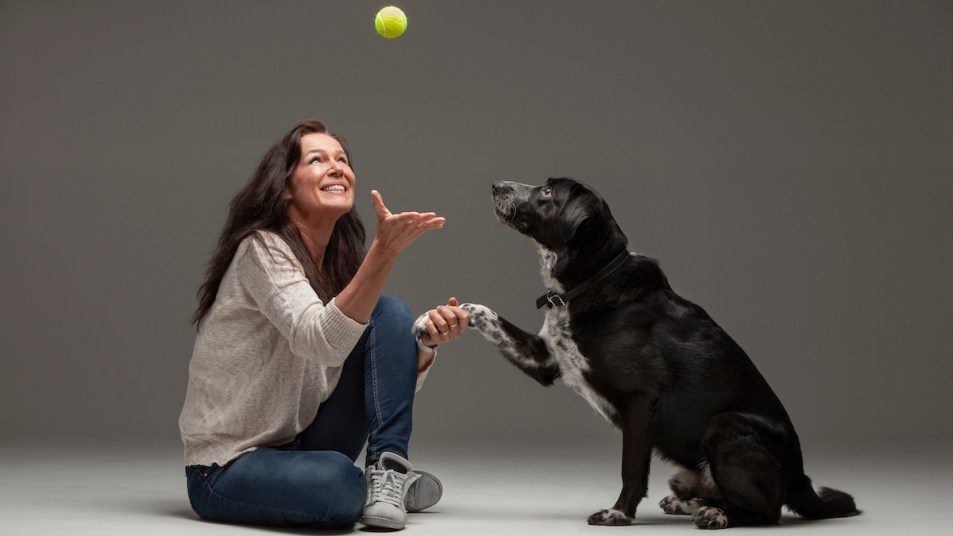
Perhaps you’ve heard of Chaser the border collie, the dog who knew over 1,000 words and had a huge pile of toys to show for it. My father, John Pilley, was Chaser’s human parent, teacher, and research partner. As a university professor and research behaviorist, he knew that learning a new language required a vocabulary and Chaser’s would be the names of her toys — all 1,022 of them to be exact. She also learned verbs, adverbs, adjectives, and prepositions, so yes, her language learning was serious, but the methodology not so much. Learning should be fun, and research supports this idea. It also supports the power of praise. When the student gets it right, let them know over and over again. “Good dog!” is not just for puppies. Chaser’s learning demonstrates that the powers of play and praise are virtually limitless.
The type of learning that my father created with Chaser stemmed from her being motivated, excited, locked, and loaded. This concept encompassed kicking some antiquated concepts to the curb and shining the light on a new day for dogs. Science has confirmed that dogs, similar to humans, have an extensive array of emotional experiences. Just like toddlers, they have an innate desire to play. From working dogs to family dogs, play is an integral part of learning.
Play Is a Natural Act
Dogs play naturally. Starting from the time they are puppies, they learn to play by themselves and with each other. They play with people and even other species. We silly humans can spend hours watching dogs on social media that are engaged in play-based behavior. It’s so darn entertaining it’s addictive. And yet, play is just another day at the park for your pet. They love playing monkey-in-the-middle with a giant beach ball tossed over their head, or just chasing another animal or children around the yard. They jump, leap, tug, run, and play so hard that their back legs can get ahead of their front, and they take a tumble — only to recover with a brief body shake to hit their reset button and start again. These goofy, haphazard, and seemingly innocuous behaviors play a critical role in our pup’s development.
From the moment my parents brought Chaser home, she loved playing with toys. To describe her as “a player” was an understatement; she was a grifter of play. If an object was allowed in her mouth for her to shake, rattle, and roll, it was her favorite toy. But there was an important hitch. It was her favorite toy only if someone was playing with her. She always needed a companion to toss, catch, chase, or hide the toy. She never played by herself.
Channeling her innate instinct to play became a gold mine for teaching her human language. Seeing her with her huge pile of toys could seem to some at odds with serious scientific research. But it’s not as silly as it seems. Play literally fast-tracks learning in humans and animals. It deepens relationships, builds confidence, and makes learning fun. If we are having fun, we are more likely to repeat a behavior, which brings us full circle to repetition, which is mandatory for mastering anything in life. Who, other than children, have such a high capacity and joy for playful repetition? Only dogs.
Play Is Important for Memory
When it comes to learning, the canine memory system has a key role. How does “play” cause dogs to log the names of objects into their cranial hard drive? Just like humans, it all comes down to value. If you meet someone at a party that you think is cute, you are more likely to remember their name. The same is true for dogs.
If the experience is pleasurable, pairing a name with an activity or object rings the proverbial bell. For your pup, these are words such as “walk,” “out,” “ball,” “Frisbee,” and “good dog!” On the flip side, if the experience is painful, aversive, or simply not fun, this also connects the dots. These can be words such as “vet” and “bath,” or it can be a person like your creepy Auntie Claire who hangs onto a hug a little too snugly. These words and experiences have value — positive and negative — and it doesn’t take long for our pups to code these words into their short-term and long-term memory.
Because dogs understand so much, we sometimes even resort to spelling in their presence. But that doesn’t work for long. Dogs are masterful listeners and can decode the C.O.D.E. with remarkable speed.
Chaser learned hundreds upon hundreds of words. But in order for her to remember the names of her toys, the toys themselves had to have value. Their value was the pure enjoyment they brought to her. It was the engagement and fun of playing with them as we threw them to her, or hid them in plain sight, then on top of the table, or in the bathtub. She loved the game of hide-and-seek.
Dogs, like children, learn through the processes of association and “fast-mapping” — the ability to acquire a word rapidly with minimal information — that are powered by play. For example, children learn the name of Santa Claus because he’s big, jolly, and slides down the chimney once a year bringing them lots of gifts. They learn “spoon” because it delivers food to the tummy. Chaser didn’t have these specific types of associative markers, but what she did have was impressive: It was joy. She simply loved to play with her toys — and with us.
Dogs Can’t Get Enough Play
Play is not only a powerful learning tool, but a path to happiness. It cuts down on fear and anxiety and is hugely important in cementing our bond. On the flip side, the absence of play in dogs suggests poor levels of care. As Chaser illustrates, a dog can never get enough play.
Dog lovers often take play for granted. But as crucial as it is, its exact role has stumped animal behaviorists for decades. While animals have developed specific behaviors for survival, play is different. It often consists of large, vibrant, exaggerated movements that in the wild could easily attract the attention of predators. And because play is so acrobatic and animated, even if it doesn’t attract a predator, it’s certainly not conserving energy — precious energy an animal might need to survive in extreme conditions.
For reasons like these, researchers studying animal behavior have had a difficult time understanding why animals play. But let’s cut through the scientific jargon: The primary reason is that it feels good.
To this, Chaser would agree. She was living proof that lifelong, perpetual play kept her young at heart and enlarged her world. All dogs have this capacity. They are born with a remarkable, childlike purity of spirit that remains throughout their lives. They demonstrate so beautifully that the simple act of play enables us to be in the moment of joy.
If we don’t take a page from their “play” book, we are truly the lesser of the two species.
A version of this article appeared in our partner magazine, Inside Your Dog’s Mind, in 2022.


